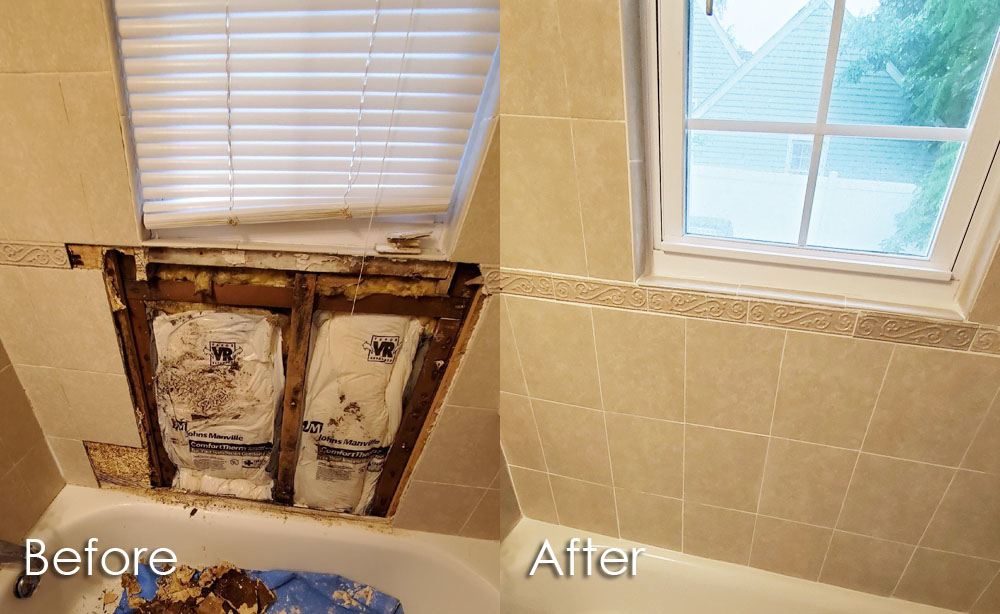The writer is making a number of great observations relating to How to Repair and Prevent Bathroom Water Damage as a whole in the article beneath.

The shower room is very prone for moist accumulation and potential water damages as a result of the regular use of water in it. This write-up offers straightforward examination methods to help spotting water damages threats.
The regular use of water in the bathroom makes it exceptionally prone for moist accumulation and also prospective water damage. By evaluating it routinely, you can lower water associated damages.
The adhering to collection of evaluations is very easy to carry out and must be done when in every 3 months in order to maintain your restroom healthy as well as to prevent possible water damages brought on by the tub, the shower, pipe joints as well as plumbing, sinks, cabinets, and also the bathroom
Do not neglect doing these examinations and be detailed while doing them. Keep in mind that these basic inspections can conserve you a lot of cash by providing very early indications for water damages
Sinks and Cabinets
Sinks as well as closets are subjected to dampness and moisture everyday and also are frequently ignored. Inspect on a regular basis under the sink and on the kitchen counter above it. Fix any kind of drip in the catch as it may recommend drainpipe issues. Check out the sink, sluggish draining pipelines may suggest an obstructed drain. Replace sink seals if they are split or loose.
Tub as well as Shower
The shower and also bath tub call for special interest and also maintenance. Inspect the tiles and replace if split. Make sure that there is no missing grout between the ceramic tiles. Inspect as well as replace broken caulking at joints where the wall surfaces meet the flooring or the bathtub. Clogged drains and also pipes issues will stop the tub from drying and might indicate severe problems beneath the bath tub. Consult with a professional instantly to avoid structural damage. Take note of discolorations or soft areas around the tub walls as they may indicate an internal leak.
Plumbing
Signs for water damage are hard to detect since most pipelines are mounted inside the wall surfaces.
Pay unique attention to floor covering and also wall surfaces wetness as well as stains as they may show an unseen plumbing trouble. Inspect wetness levels in adjoining areas also.
The Bathroom
The toilet is a vulnerable water junction. Examine the water lines and also search for leaks around the toilet seat, in the tube, as well as under the water tank. If you identify any signs of wetness on the flooring around the bathroom, look for leaks in the toilet rim and container seals.
Know that hanging bathroom dish deodorants boosts the possibilities for obstructions.
Water Damage Signs In The Bathroom To Avoid Cleanup
Musty smell
This is one of the easiest signs to catch because musty smells are so odorous. The damp, earthy, moldy smell should be a big red flag. The smell will develop when moisture gets trapped in surfaces, and begins to facilitate mold growth. Leaking pipes under cabinets, inside walls, and behind shower fixtures will cause moisture to stay trapped and not dry, which will lead to mold growth and spread. As soon as you notice any musty smells in your bathroom, have it checked for hidden water damage and cleanup signs.
Visible mold
If the smell isn’t there to give it away, sometimes you will actually see mold growth. Finding mold in your bathroom is a serious problem, because mold is very harmful to your health. By the time mold growth is visible, it also means that water damage has already occurred and been present for some time. The only way the mold problem can be resolved is to find the source of the moisture and get it stopped. To safely and adequately remove mold, you need to have professionals handle the remediation. Do not waste any time in getting mold problems addressed, fixed, and sanitized so that you can protect you and your family from the many respiratory symptoms caused by mold exposure.
Damaged floors
Bathroom floors should be able to withstand some exposure to water while still remaining in good condition. However, when excess exposure or water leaks occur, they will begin to damage even the most water-resistant flooring. If you notice any cracking, bubbling, staining, or warping on your bathroom floors, there is probably a water leak somewhere causing the distortion. If you notice areas of the floor have become softer, or even have a spongy feeling, there is probably damage to the subfloor. Subflooring is typically made up of plywood. When plywood is exposed to water or moisture, it will absorb it. Once it has become saturated, the weight of the excess water will cause the wood to swell and soften. Check the floors in your bathroom frequently to catch any of these sings before they lead to damaged subflooring.
Changes on walls
When water leaks behind walls, it will cause changes in the drywall. Peeling plaster, blistering paint, and soggy wallpaper are all good indicators that excess water is building up behind the wall. Water leaking behind drywall will cause it to swell and be soft to the tough. If you start to notice gaps along the trim of your walls, or where tile meets the wall, it could also be a strong indicator that there is a leak behind the wall. Any changes, distortion, or damage on the walls should be evaluated as soon as you notice it to prevent further water damage and cleanup.

As an enthusiastic person who reads about Common Causes of Water Damage in a Bathroom, I was thinking sharing that excerpt was a great idea. Enjoyed our article? Please share it. Let other people locate it. Thanks a bunch for your time. Please stop by our site back soon.
Click Here